I learned a basic model in an anthropology class long ago, that a cultural pyramid’s base was the environment and all else drew from that, including technology, economy, polity, and ideology. As the planet continues to face multiple ecological crises, not the least of which is climate change, authors around the world continue to tackle the loss of our natural world’s balance and livelihood. Fiction is a tool on that pyramid. While preachy fiction is looked down upon, writers have shown that they can weave impactful stories with the important inclusion of what’s happening on the planet. Because as time impossibly marches forward, and our natural home–Earth–is in increasing trouble, authors continue to use storytelling as a tool to effect change. Many stories aren’t overtly advocative. Most are creative tales that, while getting us to think about our natural world, also remind us of our humanity within that world, which is a crucial connection often ignored in other literature. As always, the genres are diverse. So if you have enjoyed this fiction, there’s much more to come in 2021. Here’s a sample.
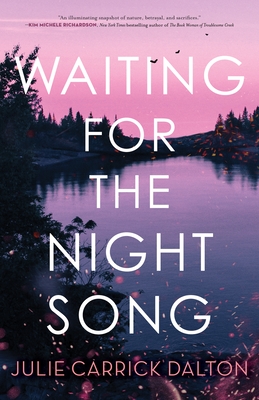 In January comes Julie Carrick Dalton’s Waiting for the Night Song, which is, according to its book description at Amazon, “a love song to the natural beauty around us, a call to fight for what we believe in, and a reminder that the truth will always rise.”
In January comes Julie Carrick Dalton’s Waiting for the Night Song, which is, according to its book description at Amazon, “a love song to the natural beauty around us, a call to fight for what we believe in, and a reminder that the truth will always rise.”
 Also in January comes That Old Country Music, by Kevin Barry–a collection of Irish tales. Barry includes wonderful landscape descriptions in his portrayals of rural Ireland.
Also in January comes That Old Country Music, by Kevin Barry–a collection of Irish tales. Barry includes wonderful landscape descriptions in his portrayals of rural Ireland.
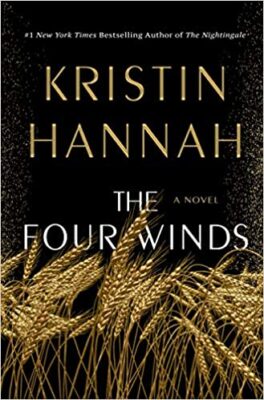 Coming in February is Kristin Hannah’s The Four Winds, a historical reminder and brilliant story set in the dust bowl. Does Elsa fight to save her land, or, like million of others, head to the promised land of California?
Coming in February is Kristin Hannah’s The Four Winds, a historical reminder and brilliant story set in the dust bowl. Does Elsa fight to save her land, or, like million of others, head to the promised land of California?
 In February I’m also looking forward to Elvira Navarro’s (translated by Christina MacSweeney) Rabbit Island, a surreal weird fiction collection of short stories focused on rabbits, birds, creatures thought extinct, and more.
In February I’m also looking forward to Elvira Navarro’s (translated by Christina MacSweeney) Rabbit Island, a surreal weird fiction collection of short stories focused on rabbits, birds, creatures thought extinct, and more.
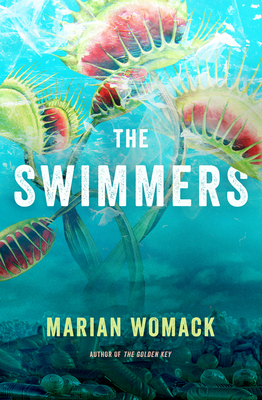 Another weird fiction title expected in February comes from Marian Womack: The Swimmers. The landscape of Andalusia is described as: “After the ravages of global warming, this is place of deep jungles, strange animals, and new taxonomies. Social inequality has ravaged society, now divided into surface dwellers and people who live in the Upper Settlement, a ring perched at the edge of the planet’s atmosphere.”
Another weird fiction title expected in February comes from Marian Womack: The Swimmers. The landscape of Andalusia is described as: “After the ravages of global warming, this is place of deep jungles, strange animals, and new taxonomies. Social inequality has ravaged society, now divided into surface dwellers and people who live in the Upper Settlement, a ring perched at the edge of the planet’s atmosphere.”
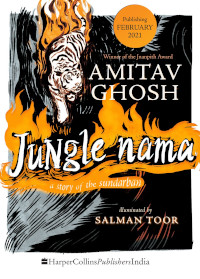 February is also when Amitav Ghosh’s novel Jungle nama is published by HarperCollins India. According to the Times of India, it’s a “verse adaptation of an episode from the Forest Lady (Bon Bibi) legend of the Sundarban.”
February is also when Amitav Ghosh’s novel Jungle nama is published by HarperCollins India. According to the Times of India, it’s a “verse adaptation of an episode from the Forest Lady (Bon Bibi) legend of the Sundarban.”
 February is definitely a busy month, as Namina Forna’s The Gilded Ones is also out. It’s a YA fantasy with heroine Deka appearing in the first of the Deathless series. In this story, steeped in natural landscape, Deka is anxious about the Ritual of Purity.
February is definitely a busy month, as Namina Forna’s The Gilded Ones is also out. It’s a YA fantasy with heroine Deka appearing in the first of the Deathless series. In this story, steeped in natural landscape, Deka is anxious about the Ritual of Purity.
 Coming in March is Kazuo Ishiguro’s Klara and the Sun. Klara is described as an “Artificial Friend” who observes, when the sun’s arc is right, the behavior of customers in a changing world.
Coming in March is Kazuo Ishiguro’s Klara and the Sun. Klara is described as an “Artificial Friend” who observes, when the sun’s arc is right, the behavior of customers in a changing world.
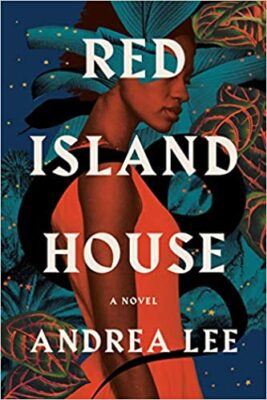 Coming in March, by Andrea Lee, is Red Island House, set on the beautiful island of Madagascar. The novel exposes the conscience of Shay, who comes from privilege and builds a dream house on an isolated beach but notices the strong connection to land and myth by those around her carrying the heavy weight of colonial legacy.
Coming in March, by Andrea Lee, is Red Island House, set on the beautiful island of Madagascar. The novel exposes the conscience of Shay, who comes from privilege and builds a dream house on an isolated beach but notices the strong connection to land and myth by those around her carrying the heavy weight of colonial legacy.
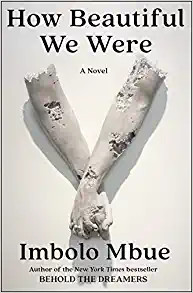 Also coming in March is Imbolo Mbue’s How Beautiful We Were, which pits residents of a fictional African village against an American oil company threatening to ruin ancestral ways of life, environmentally degrade their land, and take away all that is dear.
Also coming in March is Imbolo Mbue’s How Beautiful We Were, which pits residents of a fictional African village against an American oil company threatening to ruin ancestral ways of life, environmentally degrade their land, and take away all that is dear.
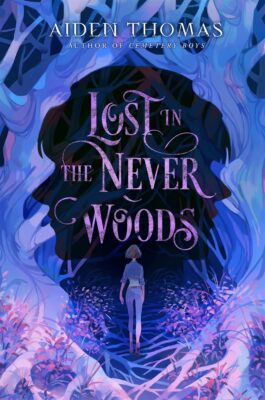 For the YA crowd, Lost in the Never Woods, by Aiden Thomas, has the forest as a central character in this re-imagining of the classic story of Peter Pan.
For the YA crowd, Lost in the Never Woods, by Aiden Thomas, has the forest as a central character in this re-imagining of the classic story of Peter Pan.
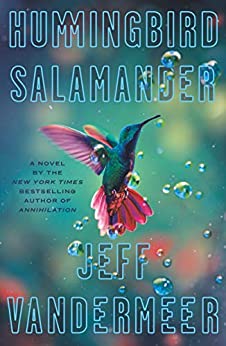 Coming in April, Hummingbird Salamander is Jeff VanderMeer’s newest ecological thriller. The plot and mystery unfold with the simple act of “Jane Smith” receiving a key to a storage unit and taking a taxidermied hummingbird. According to the book description at Amazon, “Hummingbird Salamander is Jeff VanderMeer at his brilliant, cinematic best, wrapping profound questions about climate change, identity, and the world we live in into a tightly plotted thriller full of unexpected twists and elaborate conspiracy.”
Coming in April, Hummingbird Salamander is Jeff VanderMeer’s newest ecological thriller. The plot and mystery unfold with the simple act of “Jane Smith” receiving a key to a storage unit and taking a taxidermied hummingbird. According to the book description at Amazon, “Hummingbird Salamander is Jeff VanderMeer at his brilliant, cinematic best, wrapping profound questions about climate change, identity, and the world we live in into a tightly plotted thriller full of unexpected twists and elaborate conspiracy.”
 Another interesting read coming in July is Venetia Welby’s Dreamtime, where the author “paints a terrifying and captivating vision of our near future and takes us on a vertiginous odyssey into the unknown. A thrilling work of speculative fiction for our times.”
Another interesting read coming in July is Venetia Welby’s Dreamtime, where the author “paints a terrifying and captivating vision of our near future and takes us on a vertiginous odyssey into the unknown. A thrilling work of speculative fiction for our times.”
Coming in September is Richard Powers’ (author of 2019 Pulitzer Prize winning The Overstory) Bewilderment, another story full of concern and descriptions of our natural world. I haven’t seen a cover or much description yet, but you can read more at LitHub.
Low-res thumbnails are used in accordance with fair-use.
I sometimes wonder if an environmentally minded author’s real life, casual conversations might be considered preachy in some circles. I don’t think we should be afraid of creating characters who say what we want to say. It’s a tricky balance. As one reviewer once said to me, “When it comes to the environment, it’s bit late for being obscure.”
An interesting selection of books, by the way.
I based my thoughts on a survey I did, which also seems to reflect other conversations I’ve had at public panels and readings. See https://dragonfly.eco/impacts-of-environmental-fiction-survey-results/.
It’s an interesting conversation. Maybe we can bring it up in Discord?